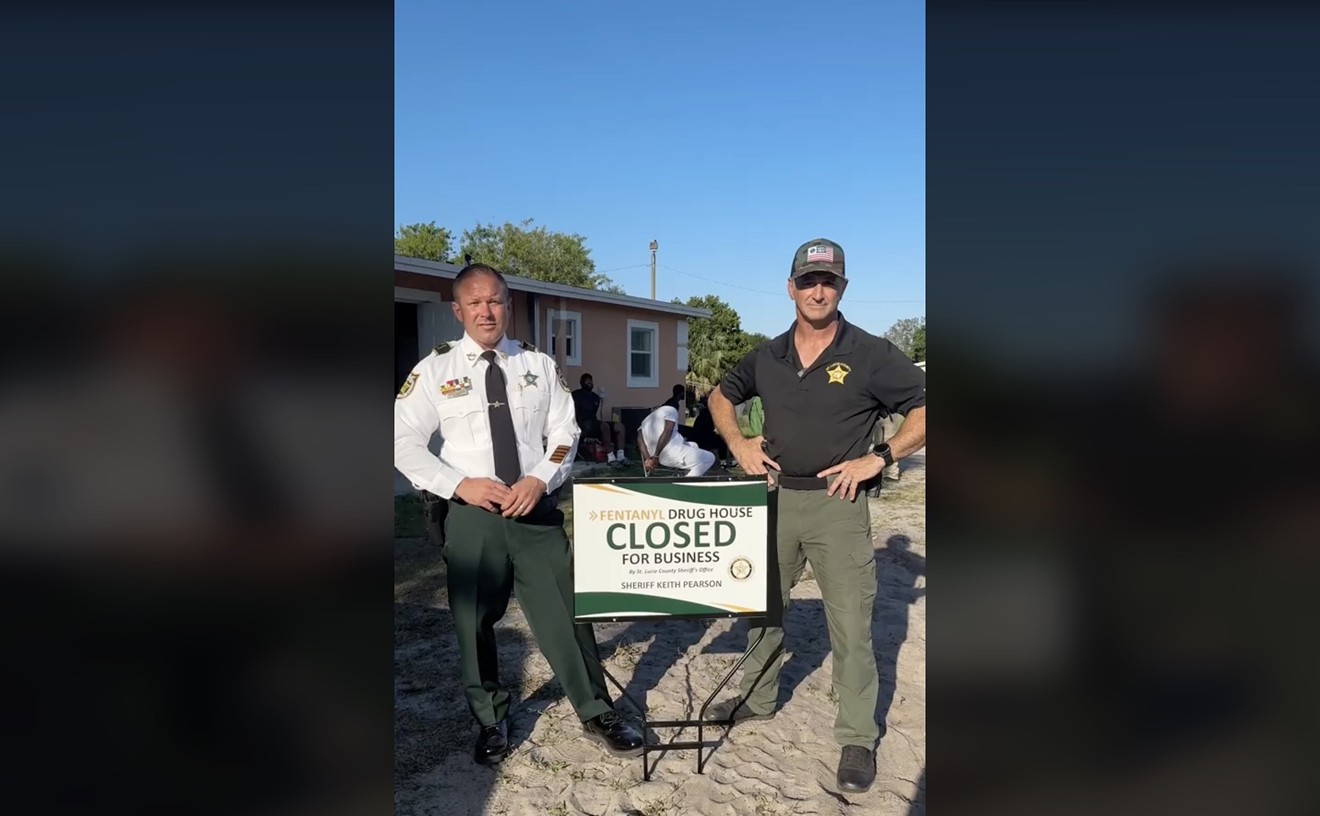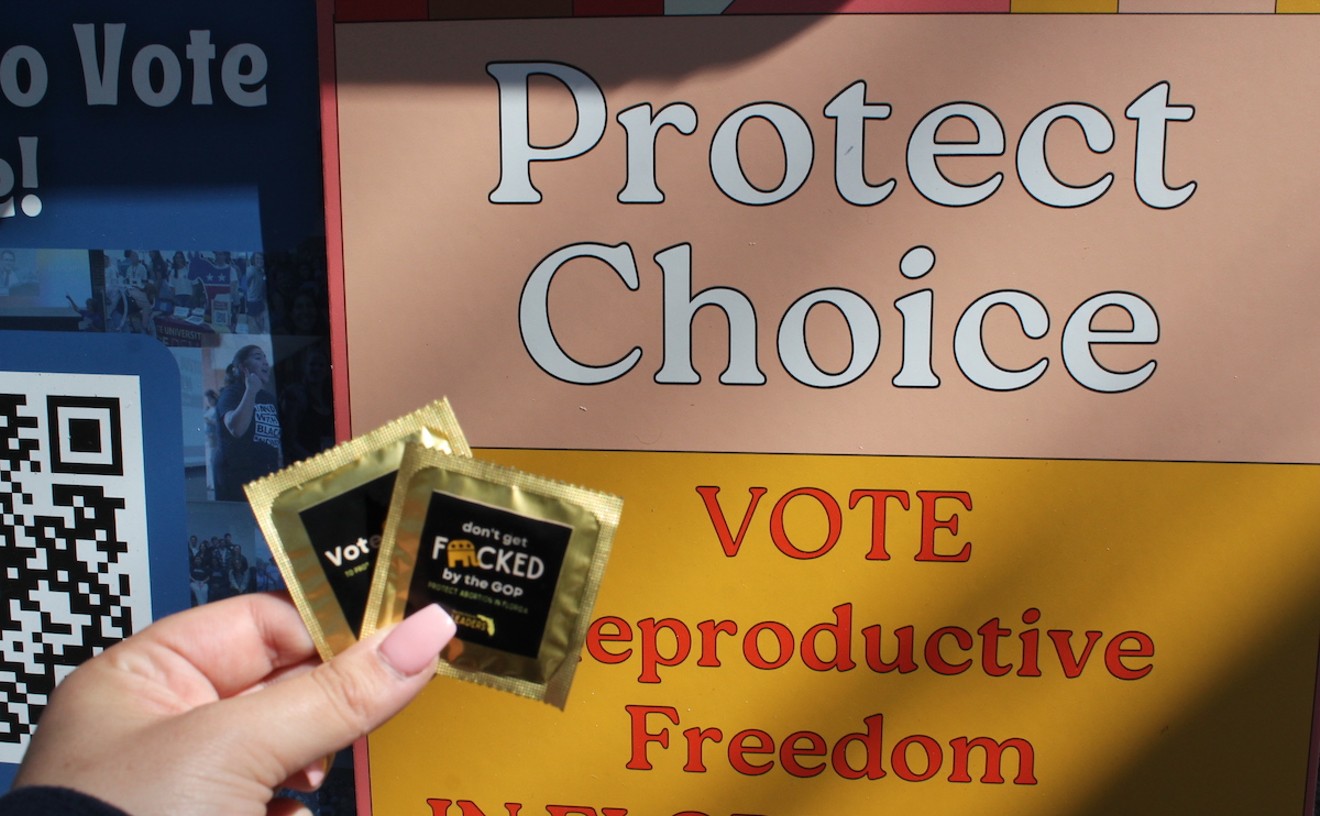Gen. Andrew Jackson ended that pastoral existence in 1818 when he invaded Spanish Florida, and in retaliation for Creek uprisings further north burned 300 Miccosukee homes, destroyed food stores, and expelled the survivors. The tribe's flight south toward the wilderness had begun, with Jackson and his soldiers in bloody pursuit.
In 1835, as president of the United States, Jackson's policy of removing the Florida Indians to reservations in the Oklahoma Territory ignited the Second Seminole War, a bloody, seven-year conflict that cost the U.S. Treasury $30 million and drove the so-called Seminoles -- which included Muskogee Creeks and the bands who would later call themselves Miccosukee -- further south.
The Indians sought refuge among the hammocks of the Everglades and the Big Cypress swamp. But troops followed them, killed or captured the men, and burned their homes. "They hunted us with dogs," says Virginia Poole, a tribal member who has written about Miccosukee women and at age 50 is considered an elder entrusted with responsibility for passing on Miccosukee history. "We had to abandon our babies. Sometimes we smothered our babies -- not intentionally, but to keep them quiet. We weren't even allowed to bury our dead."
In 1845 the U.S. Army signed a treaty that divided Florida along the Peace River and granted Indians rights to the land south of it, with the exception of the two coastlines. But that didn't stop the burning and looting. Indians were duped, kidnapped, and otherwise driven toward Oklahoma. The removal efforts culminated in 1858 when Indian leader Billy Bowlegs, who had three times refused to be bribed or cajoled into moving, agreed to take a small group of followers and relocate to Oklahoma. The next year Bowlegs returned to Florida to lead 75 more Indians west. Roughly 200 unconquered Indians remained behind in the Everglades. They had achieved what they wanted most: to be left alone. About two-thirds of these Seminoles were of the tribe now called Miccosukee; the others spoke a different language.
As the government in Washington turned its attention to the Civil War, the Indians enjoyed nearly 50 years of unlimited and generally peaceable access to the great swamp. Historical forces, however, would change that.
By 1920 the U.S. Army Corps of Engineers had dug canals to the Gulf and Atlantic coasts, draining vast quantities of water from the wetlands. The Florida land boom had begun, and it spelled great trouble for the Indians, who now had to share their hunting territories with outsiders. Some fled to reservations set up in Hendry, Monroe, and Glades counties. Others, including members of the tribe now called Miccosukee, decided to tough it out in the Everglades. "The Corps of Engineers told us, 'There's going to be a lot of water -- water is going to stay here. There's going to be good water and lots of fish,'" relates 76-year-old Buffalo Tiger, a former tribal chairman. "But the water isn't good; the fish aren't good. What white people say doesn't happen."
Tiger was six when white construction crews brought in the "walking dredge" that dug a cross-state drainage ditch and created an elevated road with the muck. Eventually the road linked Tampa and Miami and was christened the Tamiami Trail. Its completion in 1928 brought tourists to the wilderness and Miccosukees to the Trail in hopes of earning a livelihood. These Indians were proud of their independence and disdained the Seminoles -- a name they reserved for those who had opted for reservation life. The white government considered all Florida Indians to be Seminoles, but these renegade Indians on the Trail had no official status.
In the Thirties, when naturalists began to recognize the Everglades as an environmental wonder, the Trail Indians were viewed as a novelty that should be displayed along with the sawgrass and the cypress knees. "Perhaps no one feature incident to the Everglades of Florida is more outstanding in the mind of the average northerner, or which, as a visitor, he will be more interested to see, than the Seminole. It is believed that the Seminole would take kindly to the idea and fit into the general park scheme perfectly," wrote Ernest Coe in 1931. As chairman of the Tropic Everglades National Park Association, Coe played a pivotal role in the creation of the park.
Coe and other civic-minded South Floridians helped both the park and the Indians gain recognition. When Congress passed the park's enabling act in 1947, it preserved some Indian rights and contained this language: "Nothing in this ... act should be construed to lessen any existing rights of the Seminole Indians which are not in conflict with the purposes for which this park is created." But in fact Indians living in the southern region of the new park were pushed north to the Tamiami Trail and forced to compete with those already living there. The struggle for a secure home continued.
In the late Fifties, the Trail Indians found a creative way to gain recognition and autonomy. When the U.S. government refused to give the Miccosukees the rights they thought they deserved as a tribe in their own territory, they sought recognition from other nations. And when Fidel Castro promised them a homeland, the embarrassed U.S. government agreed to recognize them as a tribe, allowing them to receive various federal benefits. "Castro said that if you people have a hard time and cannot live the way you want to live in the Florida Everglades, you can live in Cuba," recalls Tiger, who led the delegation to Havana.
In 1962 the federal government recognized them as a tribe. Miccosukee elders warned that official recognition could be the first step toward the tribe's downfall. With it came the white man's influence over education and tribal government, for example, and the diminished influence of such traditional institutions as the revered medicine man. "They looked on it as abandoning the Indian life," Virginia Poole says. "They thought it was the first step in losing our cultural heritage."
Now Buffalo Tiger speaks of dangers more pernicious than nineteenth-century muskets or turn-of-the-century dredges: televised American pop culture, high-fat American food, and other modern intrusions. Poole recognizes the dangers that worry Tiger, but she believes the tribe can conquer them by preserving the language, teaching children about their heritage, and, most important, maintaining their home in the Everglades. "As long as we have this base," she says, "we have a tribe. A lot of people have lived here their whole lives. I don't think they'd give it up for anything."
Sources: Peter Matthiessen, Indian Country, 1984, Viking Press. Virginia Peters, The Florida Wars, 1979, Archon Books. James Goss, Usual and Customary Use and Occupancy by the Miccosukee and Seminole Indians in Big Cypress National Preserve, Florida, National Park Service, 1995.
-- Paula Park










